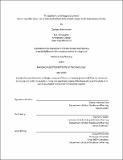| dc.contributor.advisor | Karilyn Crockett. | en_US |
| dc.contributor.author | Avre, Zachary Wayne. | en_US |
| dc.contributor.other | Massachusetts Institute of Technology. Department of Urban Studies and Planning. | en_US |
| dc.date.accessioned | 2020-09-15T22:04:56Z | |
| dc.date.available | 2020-09-15T22:04:56Z | |
| dc.date.copyright | 2020 | en_US |
| dc.date.issued | 2020 | en_US |
| dc.identifier.uri | https://hdl.handle.net/1721.1/127584 | |
| dc.description | Thesis: M.C.P., Massachusetts Institute of Technology, Department of Urban Studies and Planning, May, 2020 | en_US |
| dc.description | Cataloged from the official PDF of thesis. | en_US |
| dc.description | Includes bibliographical references (pages 79-83). | en_US |
| dc.description.abstract | Amidst persistent and widening racial wealth divides in their communities, local and state governments across the United States have deployed non-traditional tools to support underserved entrepreneurs of color and build wealth in communities of color. While few funding efforts have yielded systemic change to-date, programs like the Chicago Microlending Institute (CMI), an effort led by the City of Chicago and Accion Chicago to meet the capital demands of the city's small businesses by building a scale-advantaged network of microlenders, suggest new pathways for municipalities to challenge the legacy and persistence of racialized economic segregation in their communities. This thesis serves to document CMI as a case study of a municipal access to capital program by exploring its origins, program structure, outcomes for borrowers and lenders, and insights from insiders involved in designing and implementing the program. Situating the program within the context of Chicago's racialized lending landscape and historical attempts to build wealth within a segregated economy, this thesis draws on semi-structured interviews with participating lenders, analysis of lending data, and internal program documents to answer the following questions: to what extent did microloans and related services offered through CMI reach entrepreneurs of color and neighborhoods least served by traditional financial institutions in Chicago? What aspects of the program did lenders consider most effective, and where did they experience pain points? The study concludes with policy and programmatic recommendations for the City of Chicago to build upon the precedent of CMI and for other municipalities exploring policy interventions to extend access to capital to underserved borrowers to learn from the program's successes and shortcomings. | en_US |
| dc.description.statementofresponsibility | by Zachary Wayne Avre. | en_US |
| dc.format.extent | 83 pages | en_US |
| dc.language.iso | eng | en_US |
| dc.publisher | Massachusetts Institute of Technology | en_US |
| dc.rights | MIT theses may be protected by copyright. Please reuse MIT thesis content according to the MIT Libraries Permissions Policy, which is available through the URL provided. | en_US |
| dc.rights.uri | http://dspace.mit.edu/handle/1721.1/7582 | en_US |
| dc.subject | Urban Studies and Planning. | en_US |
| dc.title | 'The Backbone of Chicago's economy" : the Chicago Microlending Institute and the road to financial inclusion for entrepreneurs of color | en_US |
| dc.title.alternative | Chicago Microlending Institute and the road to financial inclusion for entrepreneurs of color | en_US |
| dc.type | Thesis | en_US |
| dc.description.degree | M.C.P. | en_US |
| dc.contributor.department | Massachusetts Institute of Technology. Department of Urban Studies and Planning | en_US |
| dc.identifier.oclc | 1193555618 | en_US |
| dc.description.collection | M.C.P. Massachusetts Institute of Technology, Department of Urban Studies and Planning | en_US |
| dspace.imported | 2020-09-15T22:04:55Z | en_US |
| mit.thesis.degree | Master | en_US |
| mit.thesis.department | UrbStud | en_US |
